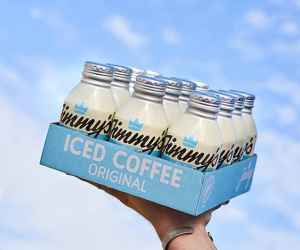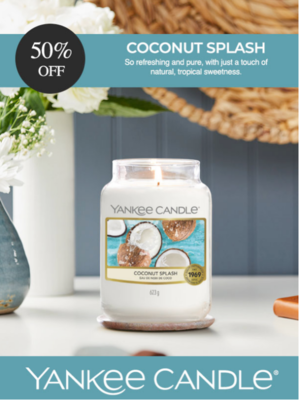Learn to create a rich and creamy roasted chestnut ice cream, blending festive nutty flavours with indulgent textures. Perfect for the holiday season! Includes recipe and serving ideas.
There’s something undeniably nostalgic about the aroma of roasted chestnuts wafting through a winter market. Their sweet, earthy flavours capture the essence of the festive season, and they’re a familiar and favourite treat during the holidays.

What if you could take that cosy, comforting feeling and transform it into a creamy, indulgent dessert? Roasted chestnut ice cream does just that, offering a unique and sophisticated option for your Christmas celebrations. It’s the perfect way to impress your holiday guests with a dessert that feels both nostalgic and creative.
In this article, we will explain why chestnuts are so perfect for ice cream, give a little health benefits information, explain briefly their links with the festive season, and, of course, share our homemade roasted chestnut ice cream recipe. We will also provide hints and tips on how you can roast your own chestnuts at home.
If you’d like to go straight to the recipe and method, please click the following link, or read along to find out more.
What Makes Chestnuts So Special?
 Chestnuts are unlike other nuts. They have a naturally sweet flavour and a soft, almost creamy texture when cooked, making them ideal for desserts.
Chestnuts are unlike other nuts. They have a naturally sweet flavour and a soft, almost creamy texture when cooked, making them ideal for desserts.
Their unique profile has long made them a winter favourite, especially during Christmas, when roasted chestnuts are enjoyed on their own or incorporated into festive recipes like stuffing, cakes, and pastries.
Chestnuts and the Festive Season
In addition to their versatility, chestnuts are steeped in tradition. Their warm, nutty aroma is synonymous with Christmas markets, where they are roasted over open fires and sold to eager passersby.
They are also celebrated in songs like The Christmas Song (“Chestnuts roasting on an open fire”), further cementing their place as a symbol of holiday cheer.
Their comforting flavour and versatility in festive recipes make them a much-loved Christmas ingredient worldwide.
Health Benefits of Chestnuts
Chestnuts are a unique type of nut with a nutritional profile that sets them apart from others.
Here are some key health benefits:
- Low in Fat: Compared to most nuts, chestnuts are low in fat and calories, making them a lighter choice for snacking or cooking.
- Rich in Complex Carbohydrates: They provide long-lasting energy, ideal for colder months.
- Packed with Vitamins and Minerals: Chestnuts are high in vitamin C (uncommon in nuts) and are a good source of potassium, magnesium, and folate.
- Fibre-Rich: Promotes digestion and supports heart health.
Does Roasting Affect Nutritional Value?
Roasting chestnuts can slightly reduce their vitamin C content due to heat exposure, but other nutrients, like fibre, complex carbohydrates, and minerals, remain largely intact.
Roasting also enhances their natural sweetness, making them more enjoyable without significantly compromising their nutritional value.
Roasted chestnuts are a healthy, festive treat that’s both delicious and nutritious!
👉🏽 Click here to find out more about Chestnut’s health benefits.
How Roasting Enhances Flavour

Roasting chestnuts brings out their natural sweetness and adds a toasty, caramelised depth to their flavour. The process also softens their texture, making them easier to blend into desserts like ice cream.
Tips for Roasting Chestnuts at Home:
- Score the Shells: Use a sharp knife to cut an “X” on the flat side of each chestnut. This allows steam to escape and makes peeling easier.
- Roast to Perfection: Place the chestnuts in a single layer on a baking tray and roast at 200°C for about 20 minutes, shaking the tray halfway through.
- Peel While Warm: Remove the shells and inner skins while the chestnuts are still warm—they’re much easier to handle this way.
Homemade Roasted Chestnut Ice Cream
Now that you’ve learned about Chestnuts, let us share our recipe and method with you for our Homemade Roasted Chestnut Ice Cream.

Ingredients
- 250g roasted chestnuts (peeled)
- 500ml whole milk
- 250ml double cream
- 150g caster sugar
- 4 egg yolks
- 1 tsp vanilla extract
- Pinch of cinnamon (optional)
Method
- Prepare the Chestnuts: Blend the roasted chestnuts with 250ml of milk into a smooth puree (You can set a handful aside to chop roughly and add at the end of churning if you’d like a little texture to your ice cream).
- Make the Custard Base: Heat the remaining milk and cream in a saucepan until just simmering. In a bowl, whisk the egg yolks and sugar until pale. Gradually whisk in the warm milk mixture, then return to the pan and cook over low heat, stirring, until thick enough to coat the back of a spoon.
- Combine: Stir the chestnut puree and vanilla extract into the custard.
- Churn: Cool the mixture completely, then churn in an ice cream maker according to the manufacturer’s instructions.
- Freeze: Transfer to a container and freeze for at least 4 hours or until firm.
👉🏽 Note: If you do not have an ice cream maker, you can still make this ice cream. Pour the mixture into a lidded, freezer-safe container and freeze. Every 30 minutes, remove from the freezer and stir vigorously with a fork or whisk to break up ice crystals. Repeat this process for 2–3 hours until the ice cream is smooth and creamy. For more information and further hints and tips, please head on over to our article – How to Make Homemade Ice Cream Without an Ice Cream Maker
Nutritional Information (Per Serving, 8 Servings)
- Calories: 280 | Protein: 4g | Fat: 18g | Carbohydrates: 24g
Serving Suggestions
Enhance your roasted chestnut ice cream experience with these pairings:
- Spiced Caramel Sauce: The warm, buttery caramel complements the nutty ice cream, while added spices like cinnamon or nutmeg amplify the festive flavours. This combination creates a harmonious balance of sweet and earthy notes.
- Dark Chocolate Shavings: The slight bitterness of dark chocolate contrasts beautifully with the sweet, creamy ice cream. As the chocolate melts on your tongue, it creates a luxurious texture that elevates the overall dessert experience.
- Candied Chestnuts: These add a delightful crunch and intensify the chestnut flavour. The additional sweetness creates a more complex flavour profile, making each spoonful a delicious surprise.
- Crumbled Gingerbread: The spicy, crunchy gingerbread pieces provide a textural contrast to the smooth ice cream. The ginger flavour also complements the nuttiness of the chestnuts, creating a truly festive taste.
- Whipped Cream with Nutmeg: A dollop of light, airy whipped cream adds a creamy contrast to the dense ice cream. The nutmeg’s warm, slightly sweet flavour enhances the overall festive experience.
- Roasted Hazelnuts: Their toasted nuttiness complements the chestnut base, creating a layered flavour profile.
Spice Up Your Life – Enhance Your Roasted Chestnut Ice Cream with Spice!

Adding spices to roasted chestnut ice cream can elevate its flavour profile and enhance the overall dessert experience. Here are some spices that pair beautifully with the nutty sweetness of roasted chestnuts:
- Nutmeg: This warm, aromatic spice adds depth and a slightly sweet note that complements the creamy texture of the ice cream. A pinch of nutmeg can evoke a festive atmosphere, making it a perfect addition to holiday celebrations.
- Cinnamon: Known for its comforting and warm flavour, cinnamon enhances the earthy notes of chestnuts. It can be incorporated into the ice cream base or sprinkled on top for an added layer of warmth and sweetness.
- Ginger: Ground ginger or freshly grated ginger can provide a zesty kick that contrasts nicely with the sweetness of the chestnuts. Its spiciness adds complexity and can brighten the overall flavour.
- Allspice: This versatile spice, with its hints of cinnamon, nutmeg, and cloves, can add a unique twist to your ice cream. It brings warmth and depth, making it a great choice for festive desserts.
- Cloves: A small amount of ground cloves can introduce a rich, aromatic quality to the ice cream. Their strong flavour should be used sparingly to avoid overpowering the delicate taste of chestnuts.
- Cardamom: This exotic spice adds a floral note and a hint of citrus that can enhance the overall flavour profile. It pairs well with both sweet and nutty flavours, making it an interesting addition to roasted chestnut ice cream.
By incorporating these spices, you can create a more complex and enjoyable dessert that highlights the unique qualities of roasted chestnuts while adding festive flair. Experimenting with different combinations allows you to find the perfect balance that suits your palate!
👉🏽 Don’t have an ice cream maker, but thinking about buying one? Not sure which one would suit you best? Head over to our article – What is the Best Ice Cream Maker? A Detailed Review. This provides information and guidance on what you want to look for in an ice cream maker and reviews a selection of appliances.
How to Roast Your Own Chestnuts
Roasting chestnuts at home is easy and rewarding, filling your kitchen with a warm, nutty aroma.
Here’s how to do it:
- Preheat Your Oven: Set your oven to 200°C (fan 180°C).
- Prepare the Chestnuts: Using a sharp knife, score an “X” on the flat side of each chestnut. This prevents them from exploding during roasting and makes peeling easier.
- Arrange on a Tray: Place the chestnuts in a single layer on a baking tray.
- Roast: Bake for 20–25 minutes, shaking the tray halfway through to ensure even cooking. The shells will curl back, and the chestnuts will become fragrant.
- Peel While Warm: Remove the chestnuts from the oven and wrap them in a clean kitchen towel. Let them steam for a few minutes, then peel off the shells and inner skins while still warm.
Tips for Roasting Chestnuts at Home

We’ve listed a handful of tips to help you avoid some common mistakes when roasting chestnuts at home.
- Insufficient scoring: Cut an “X” deep enough to penetrate the shell and inner skin. Shallow cuts make peeling difficult and may cause chestnuts to explode.
- Incorrect temperature: Roast at 200°C (fan 180°C). Too low temperatures result in undercooked chestnuts, while too high temperatures can burn the outside before the inside is cooked.
- Overcrowding: Arrange chestnuts in a single layer on the baking tray to ensure even cooking.
- Neglecting to shake: Shake the tray halfway through roasting for uniform cooking.
- Peeling when cold: Always peel chestnuts while they’re still warm for easier removal of shells and inner skins.
These tips will help you achieve perfectly roasted chestnuts. You can enjoy them as a snack or use them in recipes like stuffings or homemade roasted chestnut ice cream.
FAQ – Should I Soak the Chestnuts Prior to Roasting?
People often ask if they should soak the chestnuts first, this is not recommended, here’s why;
Soaking chestnuts prior to roasting is not a common practice and is generally not necessary.
Instead, the key steps for preparing chestnuts for roasting include scoring the shells to allow steam to escape and prevent them from bursting during cooking.
Here are some additional important tips regarding soaking and roasting:
- Scoring: Always score the flat side of each chestnut with a sharp knife, cutting an “X” deep enough to penetrate the shell. This step is crucial as it helps steam escape during roasting and makes peeling easier.
- Roasting without Soaking: Roasting chestnuts directly without soaking allows them to develop their natural sweetness and enhances their flavour through caramelisation. Soaking may alter their texture, potentially leading to a less desirable result.
- Roasting Temperature: Roast at 200°C (fan 180°C) for about 20-25 minutes, shaking the tray halfway through for even cooking.
Soaking chestnuts is not recommended prior to roasting; instead, focus on proper scoring and roasting techniques to achieve the best results.
The Final Scoop
Roasted chestnut ice cream offers a unique and sophisticated alternative to traditional ice cream flavours. Its rich, nutty taste captures the essence of the festive season, transforming a beloved winter treat into a luxurious dessert. The creamy texture, combined with the complex flavour of roasted chestnuts, creates a gourmet experience that’s both nostalgic and innovative.

Unlike common flavours such as vanilla or chocolate, roasted chestnut ice cream provides a seasonal speciality that’s perfect for holiday gatherings. Its versatility in pairing with various toppings allows for customisation to suit different tastes.
By making this ice cream, you’re not just creating a dessert; you’re crafting a memorable experience that encapsulates the warmth and joy of the festive season.
We encourage you to try this recipe and discover a new holiday tradition. Whether served on its own or as part of a larger dessert spread, roasted chestnut ice cream is sure to impress your guests and add a touch of sophistication to your festive celebrations.
👉🏽 What’s your favourite way to enjoy chestnuts during the festive season? Let us know in the comments and share your holiday dessert ideas!
We hope that you have enjoyed our article – Homemade Roasted Chestnut Ice Cream Recipe – and that we have inspired you to give this recipe a go. If you have any questions, please drop us a comment below and we will be happy to get back to you.
Stay connected for more homemade ice cream inspiration! Share your homemade ice cream masterpieces with us on social media, and connect with a community of ice cream enthusiasts. Join us for mouthwatering recipes, expert tips, and exclusive updates. Follow us on Pinterest, Instagram, Facebook, and X by clicking on any of the social media icons below.
Disclosure: This post contains affiliate links. If you click on these links and make a purchase, we may earn a small commission at no additional cost to you. This helps support our website and allows us to continue creating content. Thank you for your support!








































Cherie, this recipe is absolutely magical! You’ve managed to capture the essence of Christmas markets in a bowl of ice cream. I love how you’ve broken down not just the recipe, but also included those brilliant tips about roasting chestnuts (that X-scoring technique is crucial, isn’t it?).
I’m curious, have you ever experimented with adding a splash of rum or brandy to this recipe? I feel like it might complement those warm spices you mentioned, especially the cardamom and cinnamon. Speaking of spices, that spice pairing guide is incredibly helpful!
One question for you and other readers: What do you think about creating a vegan version of this? Maybe with coconut cream as a base? I’d love to hear if anyone has tried something similar!
Those serving suggestions with the spiced caramel sauce and crumbled gingerbread are making my mouth water. I can already imagine serving this at my next holiday gathering!
Eric
P.S. Those step-by-step photos are absolutely stunning. They really help visualize the process, especially for first-time chestnut roasters!
Hi Eric,
Thank you so much for your thoughtful comment! So glad to hear that the recipe brought back the magic of Christmas markets for you—it’s exactly the cosy, festive feeling we’d hoped to capture. And yes, the X-scoring technique is so important to avoid exploring chestnuts! lol. Glad you found the tips helpful!
Adding a splash of rum or brandy is a brilliant idea—it would pair beautifully with the warm spices and add an extra layer of indulgence. I think it would work perfectly for a holiday gathering, giving the ice cream a grown-up twist. If you do give it a try, We’d love to hear how it turns out!
We should add that adding alcohol to ice cream comes with some challenges though. For some hints and tips on the art of balancing alcohol in ice cream, please head on over to our article – The Art and Science of Blending Alcohol with Ice Cream – which explains the challenges of adding alcohol to ice cream and provides guidance and tips on how best to do this.
As for the vegan version, I think using coconut cream is an excellent suggestion. It would bring a lovely creaminess while complementing the earthy flavours of the chestnuts. Pairing it with a little maple syrup or even almond milk for balance could work really well too. I’d be curious to hear if any readers have experimented with vegan versions as well!
Check out our article – Vegan And Dairy-Free Homemade Ice Cream Using Coconut Milk – which provides guidance and tips on using coconut milk for vegan and dairy-free ice creams and this Roasted Chestnut Ice cream recipe would easily adapt.
Glad that you enjoyed the serving suggestions with the spiced caramel sauce and crumbled gingerbread—it’s a lovely warming and indulgent combination. It sounds like your holiday gathering is going to be deliciously festive.
Thank you for your kind words about the step-by-step photos—it means a lot to know they’re helpful, especially for first-time chestnut roasters. If you try the recipe (or your vegan or boozy adaptations!), we’d love to hear all about it.
Wishing you a season full of warmth and Ice Cream!
Cherie 🍦🙂